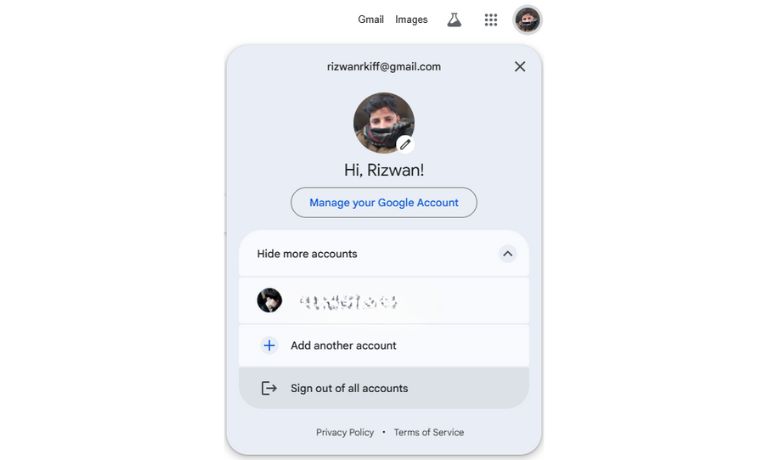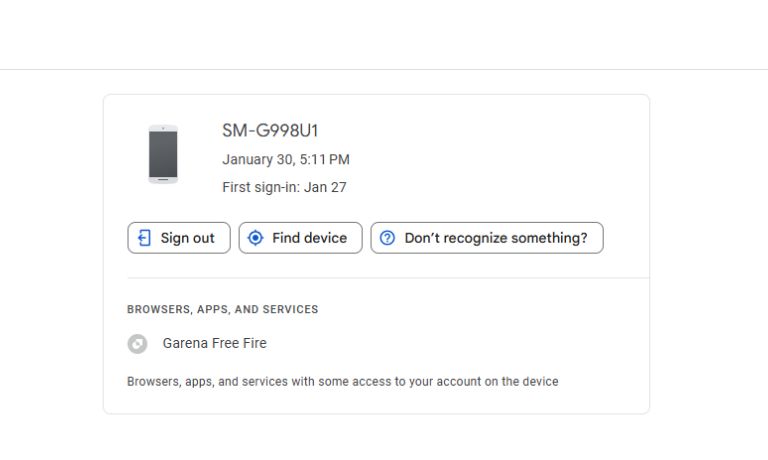If you use multiple Google accounts—for work, school, or personal use—you’ve probably encountered a common problem: you want to sign out of just one Google account, but Google signs you out of all at once.
On desktop browsers, Google uses a shared session system, which doesn’t allow you to sign out of only one account through the standard interface. However, with a few workarounds, you can manage your accounts more efficiently without affecting the others.
This guide provides step-by-step instructions for signing out of one Google account on desktop and mobile.
Why Google Signs Out All Accounts at Once

When you’re signed into multiple Google accounts in the same browser session, Google treats them as part of a single login environment. You’re signed out of all if you hit “Sign out” on one.
This design simplifies things for Google’s authentication system, but it limits control for users who want to manage accounts individually.
Can You Sign Out of Just One Google Account?
Not directly in a single browser session. On a desktop browser like Chrome or Firefox, there’s no built-in way to log out of one account without logging out of the others.
However, several effective workarounds let you do this without closing all your accounts or interrupting your workflow.
Workarounds on Desktop
Here are the most effective ways to manage multiple Google accounts and log out of just one:
- Use Chrome Profiles: Chrome lets you create separate user profiles, each with its bookmarks, extensions, and Google login. If each account has its profile, signing out of one won’t affect the others.
- Use Incognito/Private Mode: Open an incognito window and sign into the account you want to use separately. Closing the window ends the session without touching your main accounts.
- Use a Different Browser: Sign into one Chrome account and another Firefox or Edge. Each browser stores separate session data.
- Remove Account via Device Management:

- Go to myaccount.google.com
- Click Security > Your Devices
- Find the device you’re using
- Click Sign out next to the session for the account you want to remove
This method signs out that specific account from the device, though it may take a few minutes to reflect.
How to Sign Out of One Account on Mobile
Mobile platforms offer more direct control over individual accounts.
On Android
- Open your phone’s Settings
- Tap Accounts or Users & accounts
- Select Google, then tap the account you want to remove
- Tap Remove account
This removes the account from the device but keeps others intact.
On iOS (Gmail or Google App)
- Open the Gmail or Google app
- Tap your profile picture in the top right
- Tap Manage accounts on this device
- Tap Remove from this device next to the account
You’ll stay logged in to your other Google accounts.
Will Removing One Account Delete My Data?
No. Removing a Google account from a browser or device does not delete emails, files, or data. It simply ends access on that specific session or device. You can always log back in with your credentials to restore access.
Best Practices for Managing Multiple Google Accounts
If you often switch between accounts, here are a few tips:
- Use separate Chrome profiles for each account.
- Make one account your default by signing into it first.
- Avoid switching between accounts in the same tab.
- Don’t use one browser for all accounts—split them by type or use case (e.g., work vs personal).
This helps you avoid mix-ups and keeps each session more stable.
Security Tips When Signing Out
- Permanently remove your account from public or shared devices
- Use 2-Step Verification to protect your Google accounts
- Regularly review your active sessions under Security > Your Devices at myaccount.google.com
Keeping your sessions clean improves both your privacy and login experience.
Conclusion
Google doesn’t provide a simple “log out of one account” button in its browser UI. Still, with the right approach—like using profiles, private windows, or mobile settings—you can control which account stays active and sign out of only one without disrupting the rest.
If one of these methods helped you manage your Google accounts better, let others know in the comments!
I’ve been into SEO and blogging for over 7 years. I help websites show up higher on search engines. I really enjoy writing helpful guides, especially about gaming and tech stuff.
